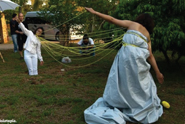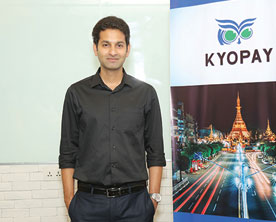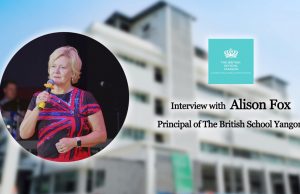Female artists seem to dominate art festivals and galleries in Myanmar. They are champions of the age of female empowerment. Not to be forgotten is Aung San Suu Kyi, one of the most respected women in the world’s public eye; she alone gives cause to the fight for equality. Why is it, then, that many women in Myanmar do not associate themselves with the word “feminism”? At the recent “Image of Woman” exhibition, held at the French Institute in Yangon, four female filmmakers sat on a panel discussing their contribution to the industry. When the moderator asked whether they considered themselves feminists, all four women replied “no”, they were not feminists. To paraphrase, they described their status in society as being equal to that of men and that, individually, they have never experienced discrimination because of their gender and, therefore, they did not feel the need to be considered male or female, but simply human.
Just the night before, at the same exhibition, a female writer from Myanmar was invited to speak about discrimination against women in the country and discuss what could be done to stop it. She mentioned that women are required to have higher marks than men in order to be accepted into university. She went on to describe the widely held belief that women do not need to be educated, because they are meant to raise children in the home. How do we change this belief? The Myanmese writer stated that she believes women need to create civil society organisations to promote equality, as well as encourage religious leaders to promote the roles of women – both in the home and the workplace.
From the point of view of this writer, discrimination exists and must be confronted. The filmmakers also agree that discrimination exists, but they believe they have never experienced it. A parallel can also be seen among female visual artists in Myanmar and the work they create. While some directly question the roles that male dominated institutions have assigned, others choose to take a more humanist approach and conciliate that men and women suffer the same fate. Take, for example, the incomparable Ma Ei, a performance artist whose practice has evolved over the last five years into a direct confrontation with men in society. A few particularly memorable performance pieces occurred at the “Beyond Pressure Performance” art festivals in 2011 in Yangon and Mandalay. In the first piece, on the grassy hill of the Say Lan Soe Pyay gardens, Ma Ei put on a men’s longyi and began to cook noodles for the audience. A very simple act, though it may seem, it raises a wealth of questions on what is and is not acceptable in the society in which the artists lives: women wearing men’s clothing, men cooking in the home, etc. That same year in Mandalay, part of her performance entailed applying nail polish and spraying perfume on a male audience member. What happens when artists begin to beg the question: where does the bridge building equality in the artwork exist in the society in which we live?
Many young artists have taken note of Ma Ei’s strong performance art pieces. In September of 2012, Yadanar Win – a young protégé at the New Zero art school in Yangon – painted the nails of male audience members “in a commentary on restrictive gender roles”. This is not a case of who copied who, but who was influenced and found strength in artistic communication. Female artists in Myanmar create their own civil society, making visual the discrimination that women all over the world face on a daily basis.
Artist Zoncy also shows her strength through works relating to women. Her recent photographic portraits at the “Image of Woman” exhibition looked at women in the countryside who work alongside men and take care of the family. Each woman wore a traditional hta mainn pulled up around her chest; each head was a piece of fruit; each body walked through rice paddies or farmed fields. Some women walked together, some alone. Zoncy’s major focal point exists outside of Yangon, being from Southeast Myanmar as she is and moving to Yangon only for her education. Preferring to relate to those women whose work directly correlates both with nature and the female spirit of family and providing, she is one of the few artists who feels free to call herself a feminist, and points out that men should, too.
Nge Lay, an installation artist and photographer, experiences a different kind of female identity; one relating to power that is both gained and lost when a woman experiences pregnancy. Phyu Mon, part of an older generation of female artists, also concentrates on the difficulty women in society face as wives, mothers and teachers. Sandar Khine, Zun Ei Phyu and Mor Mor are painters/mixed media artists who all represent some part of “femaleness”; not by questioning their relationship with men, but by looking inside themselves for answers to their insecurities, their confidence or their tears.
So many dozens of other female artists, writers and parliamentarians (and any other number of positions) live and work with and alongside men, considering themselves equal to any task. No doubt there are men who support the elimination of discrimination, while also considering their female counterparts equal, but the work is not yet done. If it were, there would not be the need for the Image of Woman panel discussions and exhibitions, nor the artwork that questions the roles of women among men. Perhaps the word “feminism” is too limiting or it does not hold the same meaning as it does in other parts of the world. The role of women in any society is upheld by the men and women in it. However, if the women with considerable amounts of power, with a distinctly louder voice, can share more through their creations – be it film or poetry, family or career – women in societies all over the world would take note and feel free, knowing that theirs is a universal struggle in solidarity.










